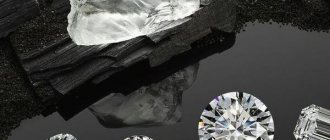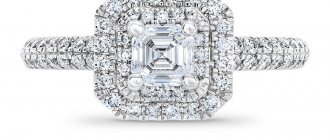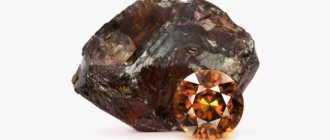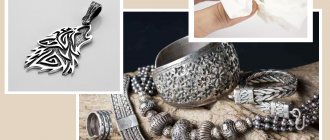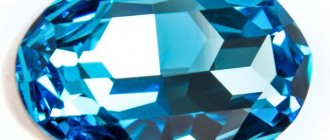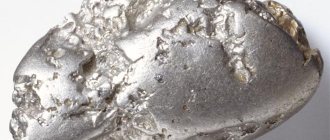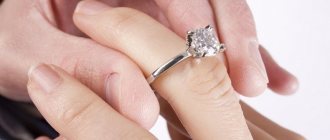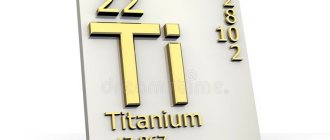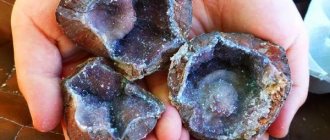- Different prices
“Don’t buy artificial cubic zirconia, take better natural zirconium,” an unscrupulous seller may catch you. And all because most buyers do not know what the difference is between cubic zirconia, cubic zirconia and zircon. Some consider them jewelry glass, others consider them a semi-precious alternative to a diamond.
The confusion in concepts stems from the fact that visually the stones are very similar. Looking at them for the first time, few who are not experienced in gemology will see the differences. And they exist, and they are significant.
What are the differences between zircon, cubic zirconium and cubic zirconia, or are they all names for the same stone? How to avoid running into fakes and buy quality rings with cubic zirconia? Read about this and more in a new article from YK.
Cubic zirconia - the artificial counterpart of diamond
Cubic zirconia is the famous brother of the diamond, which was not born for jewelry purposes. Initially, they wanted to use it in laser equipment to replace diamonds. But the beauty of the stone surprised consumers so much that jewelers became interested in it.
Cubic zirconia received its proud name from the abbreviation of the USSR Physical Institute, where it was invented in the late 60s (FIAN). Two years later, referring to the developments of Soviet scientists, Switzerland began its production of cubic zirconia under the name “jevalite”.
The popularity of cubic zirconia grew at an unprecedented rate. What can we say, in the early 90s the volume of its production in the world reached 50 million carats!
Jewelers and buyers fell in love with cubic zirconia for its striking resemblance to a diamond, but at the same time its low cost. Not so expensive to produce, with excellent shine and high strength indicators - these characteristics of the stone have become the trump card of world manufacturers in offering an alternative to expensive diamonds.
Features of cultivation
Cubic zirconia is formed from zirconium oxide using a high-frequency melting technique. In order for the crystals to grow, the heating power is gradually reduced. Simply put, cubic zirconia grows in a shell of itself.
Stones can take on different shades depending on the added impurities. For example, copper colors transparent cubic zirconia yellow, chrome green, titanium golden and honey-colored.
Today there are 20 shades of cubic zirconia, which are used as an alternative to precious stones (from emeralds to sapphires). This is due to the fact that growing cubic zirconia is faster and cheaper than mining natural stones. In laboratories, cubic zirconia crystals grow at a rate of 1 cm per hour.
Main characteristics
From a chemical point of view, cubic zirconia is the dioxide of the metal zirconium.
Attention ! Cubic zirconia is mistakenly called zirconium. The latter is a metal that is used in its pure form in metallurgy and energy, but not in jewelry.
Another frequently asked question: is cubic zirconia a semi-precious stone? Answer: No. This is an artificial analogue of a diamond, similar in beauty and physical properties. The stone has the same refractive index and even greater dispersion (the play of color within the mineral). Cubic zirconia has excellent shine (2.15-2.25) and high hardness (7.5-8 on the Mohs scale), which is as close as possible to the legendary ten of a diamond.
Standard cubic zirconia is a transparent stone (without solders, kinks, or irregularities).
Another important point. If somewhere you see earrings with the tag “CZ Diamond”, do not be fooled – this is cubic zirconia, not a diamond.
The name “cubic zirconia” is widespread mainly in the post-Soviet space and Eastern Europe. In the West and in the USA, the trade name of the stone is cubic zirconium (CZ), CZ Diamond, diamonesque.
Historical reference
You may be interested in:Silver bracelets “Sokolov”: review, description and reviews
Pure zirconium, free from impurities, was isolated only in 1925.
To date, the exact origin of the word “zircon” has not been established. Some researchers believe that it has its origins in the Arabic zarkun, meaning cinnabar, or comes from the Persian zargun (golden).
The largest deposits of minerals containing zirconium are located in India, Australia, Brazil, and the USA. The expanses of Russia are also rich in this metal; the country accounts for almost 10% of its world reserves. Thus, geologists have established that ores with zirconium are available in almost unlimited quantities on the Kola Peninsula, in the magmatic outcrops of the Khibiny massif.
There are a lot of compounds that contain zirconium in nature. However, it is found only in association with oxygen, as oxides or silicates. The main mineral in which it is present is native and gemstone zircon.
Natural zircon
Natural zircon is a semi-precious mineral of volcanic origin. Thanks to its crystal transparency, zircon resembles a diamond. It was even nicknamed in the East the “little brother” of the diamond.
The stone can be colorless or golden brown. One of its most beautiful varieties, “jargon,” has a bright golden-yellow hue.
Externally, colorless zircons can be mistaken for diamonds. But with one correction - zircon is very fragile. This is one of the reasons why the emergence of cubic zirconia quickly reduced the popularity of zircon. It has become easier for jewelers to insert cubic zirconia into jewelry than to look for high-quality zircon.
Review results
While we love zircon's beautiful tones, its shiny and fiery appearance, and the fact that it is a natural gemstone, we have to admit that zirconium is a more durable, affordable, and sustainable choice.
It is difficult to say which stone is better as both have their own advantages and disadvantages and it depends entirely on your reason for purchasing the gemstone. As you can see, both stones are very different, and both are attractive in their own way.
Tags: stone selection, stone comparison, zirconium
Swarovski crystals
Swarovski crystals are not diamonds or glass. This is artificially processed crystal of exceptional transparency. Swarovski crystals are made from more than 70 components, most of which are classified. All of them are exclusive, because they are cut by hand, and absolutely symmetrical. All edges of the stones are carefully polished. There is not a single micro scratch or crack on them!
In addition to crystal (Swarovski Crystall), the company is known for its cubic zirconia (Swarovski Zirconia), as well as topazes, sapphires, rubies, garnets, peridot, quartz, citrines, which occupy high positions in the world in terms of quality of processing.
Swarovski artificial cubic zirconia can be found in more than 20 colors. They are made in special laboratories in two ways:
- Up to 1 carat is grown in a chamber at a temperature of 1400–1600 °C for 5 days.
- It is obtained by chemical deposition using a mixture of methane + hydrogen gases.
For the fourth year now, Jewelry Karta has been collaborating with the world-famous supplier of jewelry inserts, Swarovski. We strive to use only the best materials for our collections, so we have launched a separate line of jewelry with Swarovski Zirconia cubic zirconia inserts, as well as natural stones from Swarovski Gems. Jewelers from South Caucasus inlay their products with white and colored stones. Depending on the processing method, stones in rings, earrings, pendants and pendants can take on a round, convex shape (cabochon), teardrop-shaped (in “paws” made of gold), or a heart shape.
External differences
Usually, stones cannot be distinguished from each other on their own, especially if the zirconium has been carefully processed by professionals. It is best if, when purchasing, you contact a jeweler, who, thanks to special analyzes, will give an accurate conclusion - zircon or zirconium. However, there are several characteristics by which you can visually determine what exactly is in front of you.
| Characteristics | Zircon | Zirconium |
| Color | The most varied:
| Exceptional silver gray with a steely sheen |
| Shine | Glass, metal | Metal |
| Transparency | Has inclusions in the form of cracks, drops, air or gas bubbles, and natural scratches. | When processed, it achieves pure transparency. You can see the text through the stone if you attach it, for example, to a newspaper. In air it forms a film on the surface. |
What is the difference between zircon and cubic zirconia?
There is sometimes confusion in terminology and in marking cubic zirconia is called “zircon”, which is not entirely true. Cubic zirconia and zircon are two minerals with different origins and chemical compositions. The first is artificial, the second is natural. If you look closely, you can see small inclusions inside the zircon. Cubic zirconia, on the contrary, has a perfectly even structure, purity and transparency. In addition, the weight of an artificial crystal is greater than that of a natural one.
Different prices
Jewelry with the king of stones is consistently among the top products in the Luxury segment. For example, small stud earrings made of white gold weighing 2.32 grams with two white diamonds in the UK will cost about 15 thousand hryvnia. A similar model with cubic zirconia will cost about 3,000 UAH. Price is one of the undeniable advantages of cubic zirconia, which makes it more accessible to buyers.
Cube zirconium is slightly more expensive than cubic zirconia. This is affected by its fragility and, consequently, the high cost of implementation. Massive red gold ring with cu. zirconium weighing 3.16 grams will cost about 7,000 UAH. A similar product with cubic zirconia will cost from 4000 UAH.
Advantages and disadvantages of stones
Cubic zirconia is in demand among those buyers who are on a limited budget, but want to purchase a beautiful, wear-resistant piece of jewelry. Cubic zirconia compares favorably with Swarovski crystals in the play of light.
Among the stone's weaknesses is its tendency to tarnish and scratch. The stone loses its original shine after the first 2-3 years of wear.
Due to its low cost, cubic zirconia is considered primarily a budget stone. Therefore, those for whom prestige plays a big role give preference to His Majesty the diamond.
Given its lower hardness than finite, cubic zirconium requires very careful care. Such products are not practical for everyday wear.
Which is more expensive
If we talk about cost, then cheaper is cubic zirconia, more expensive is zircon.
Natural zircon stone is quite expensive. Its price is comparable to the cost of sapphire. Jewelers use zircon as a solid crystal and use gold and silver as a setting.
Cubic zirconia, on the contrary, is inexpensive. And therefore it is more often used in inexpensive jewelry and costume jewelry. It is popular among lovers of precious items due to the fact that in most cases it looks no worse than natural stone. Therefore, it allows the buyer to save on cost rather than on quality.
How to distinguish stones?
Despite their external similarity, cubic zirconia, diamonds and cubic zirconia have a number of differences. They can be systematized into the following 4 subgroups:
- Weight and hardness . Cubic zirconia is two to three times heavier than zircon and diamond, but is inferior to the latter in hardness.
- Cut shape . The edges of cubic zirconia are slightly rounded, while those of a diamond are smooth and sharp.
- Thermal conductivity . Unlike cubic zirconia, diamond has high thermal conductivity, which is why it practically does not fog up.
- Presence of inclusions . Natural diamonds have a slight yellowish tint, while artificial cubic zirconia, cubic zirconia and Swarovski crystals have impeccable transparency. They have no defects, clouding or chips.
Swarovski cubic zirconia is the easiest to distinguish from a fake. Each stone has a small engraving of SWAROVSKI ZIRCONIA, which can be seen under a magnifying glass.
Color
The color of natural zircon crystals depends on the impurities of copper, titanium, zinc, potassium or hafnium. The most common are straw yellow, smoky, yellowish green, red and brown crystals. There are sky blue, pink, green, even black and colorless zircons.
Some zircon crystals can exhibit pleochroism: playing different shades of blue-green when illuminated from different angles.
The property of zircon to change color and transparency under the influence of ultraviolet radiation and high temperatures is often used in the manufacture of jewelry. Common brown crystals are often processed to produce rarer, beautiful blue crystals.
Cubic zirconia crystals are synthesized in the laboratory, allowing manufacturers to control the composition and amount of impurities to achieve the desired color. Crystals are almost always created colorless to imitate the color of a D-grade diamond. The second most common is pink, known by the trade name pink ice, which is very popular in the jewelry industry. Less common are green, black, blue, orange and red zirconium crystals.
In terms of color, zircon is not much different from zirconium. Both stones have distinct color ranges and are very similar to diamond in colorless states.
Where can I buy?
In order not to run into an unpleasant surprise, you should buy products with stones only from trusted manufacturers, such as Jewelry Card. All earrings with cubic zirconia, as well as other products with stones, have documents confirming their authenticity. Our jewelers pay careful attention to every detail, from the choice of metal, its design and the durability of the stones.
The catalog of the online jewelry store YUK presents a wide range of engagement rings with diamonds, as well as products with cubic zirconia. These can be minimalist jewelry with one stone or a scattering of small ones, or more complex compositions with patterns of stones. Rings/earrings with cubic zirconium and pearls, as well as tandems of transparent cubic zirconia and blue topaz, look very delicate. For romantic natures, there is a whole collection of jewelry with stones in the shape of flowers and petals.
There are favorable discounts on a number of items. This means that at a favorable price you can choose a ring as a gift in addition to gold earrings with cubic zirconia.
